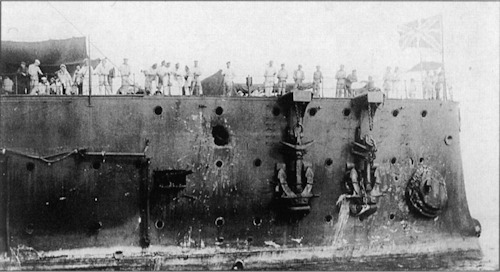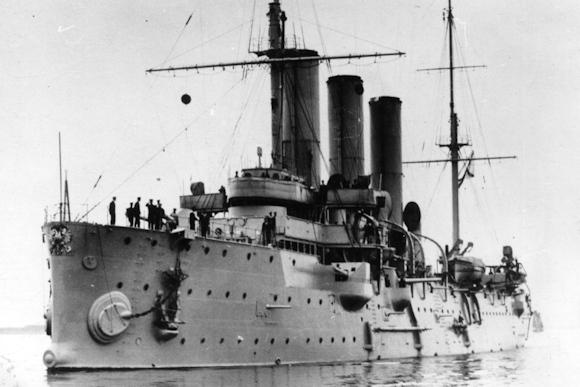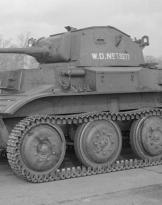THEAurora was an important Russian protected cruiser and is currently maintained as a museum ship in St. Petersburg. She was one of three cruisers in the class Pallada; the other two cruisers were the Pallada and Diana. In addition, all three ships took part in the Russo-Japanese (February 1904-September 1905).
It is worth specifying that these cruisers belonged to those categories of fast ships, destined to carry out attacks against opposing merchant ships. In fact, between the end of the 19th century and the beginning of the 20th century, units of this kind were very "fashionable"; the Royal Navy, the Navy and the US Navy also owned them.
THEAurora it was designed and laid down at the St. Petersburg shipyards in May 1897. Subsequently, it was launched in May 1900 and entered service for the Navy of the Russian Empire in the summer of 1903.
The protected cruiser Aurora, in October 1903, left Kronstadt – with Admiral Virenius' team – with the aim of strengthening the Russian fleet in the Pacific Ocean. However, while in the Red Sea, he was called back to the Baltic Sea. Subsequently, the cruiser – commanded by Evgeny Romanovich Egoriev – was ordered to leave for Port Arthur in October 1904.
THEAurora, between 21-22 October 1904, was involved in the Dogger Bank incident (North Sea). On that occasion, ships of the Russian Empire mistook British civilian fishing boats for torpedo boats of the Imperial Japanese Navy; as a result, the Russians, thinking they were enemy ships, fired. In the ensuing fire he was hit five times by friendly fire.
 The cruiser took part in the disastrous Battle of Tsushima (see article "The battle of Tsushima (1905) and the geopolitical importance of the Kuril islands"). Later – having survived the Japanese fleet – he reached Manila (Philippines), where by order of Tsar Nicholas II he was interned.
The cruiser took part in the disastrous Battle of Tsushima (see article "The battle of Tsushima (1905) and the geopolitical importance of the Kuril islands"). Later – having survived the Japanese fleet – he reached Manila (Philippines), where by order of Tsar Nicholas II he was interned.
THEAurora, during the First World War, did not particularly distinguish itself. However, in October 1917 (in the midst of the revolution), the ship was ordered to sail up the Neva to support the Bolsheviks with its cannons. The cruiser - according to historical reconstruction - fired the shot that gave the signal for the attack on the Winter Palace1.
In 1922 it became a training ship and in 1948 it was decommissioned. Later – in 1956 – she was transformed into a museum ship.
The protected cruiser Aurora it had a displacement of 6731 tons. Her dimensions were 126,8 x 16,8 x 7,3 m.
The engine system was composed of three horizontal 3-cylinder triple expansion engines, powered by 24 Belleville boilers (3 propellers). Power 11610 HP. The maximum speed was 19 knots (35 km/h).
The armament, in 1903, consisted of 152 mm, 75 mm, 37 mm guns and three torpedo tubes; in 1917 the armament consisted of 152 mm, 76 mm and 40 mm guns.
The cruiser could count on a crew of almost 600 men.

1 See A. Fraccaroli, The Aurora cruiser, in Illustrated History n°140, 1969, p.99












